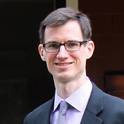In the mid-twentieth century, Cleveland, Ohio’s University Circle exemplified an emerging trend in which urban universities and other private institutions engaged in urban renewal. Situating the story of University Circle within the context of contemporary concerns about urban decay, deindustrialization, and suburbanization, the author argues that University Circle institutions were not simply trying to facilitate their own expansion. Rather, they were equally determined to create a setting appropriate to their regional, national, and even international reputations, as well as to advance the idea that an educational, medical, and cultural district could help reposition and rebrand a sagging industrial city. To do so, institutional leaders sought to make University Circle a bulwark against urban problems, which endeared them to suburbanites while constraining their relations with surrounding urban neighborhoods.
Article
Acropolis of the Middle-West: Decay, Renewal, and Boosterism in Cleveland’s University Circle
Journal of Planning History
Document Type
Article
Publication Date
2-1-2011
Disciplines
Abstract
DOI
10.1177/1538513210391892
Publisher's Statement
@ 2011 Sage Publications.
Citation Information
Souther, J. M. (2011). Acropolis of the middle-west: Decay, renewal, and boosterism in Cleveland’s University Circle. Journal of Planning History, 10(1), 30-58.
